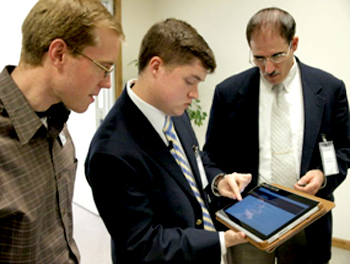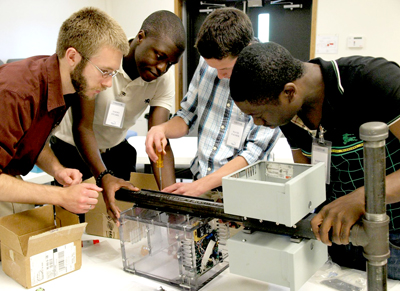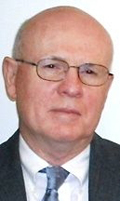MENU
 |
In contrast to Lewis' portrayal of a snowy rendezvous point for Lucy and Mr. Tumnus, sunshine figures prominently into the planning and designs of a solar-powered charging station that also lights the path.
The HCJB Global Technology Center (TC) in Elkhart, Ind., recently issued a challenge for designs and prototypes of such an apparatus, inviting the participation of engineering departments from several colleges.
 |
With a scarcity of landlines in remote communities in many parts of the world, mobile devices offer villagers a way to communicate. For instance, although 25 million people in South Africa live below the poverty line, more than 75 percent of the youth (age 15 and up) in low-income groups own mobile phones, according to research commissioned by infoDev, a global partnership program within the World Bank Group.
Charlie Jacobson, director of engineering and development at the TC, has viewed the designs and seen the prototypes offered by engineering students from Calvin College in Michigan, Cedarville University in Ohio, Grove City College in Pennsylvania, John Brown University in Arkansas and Seattle Pacific University in Washington.
 |
| Engineering interns tweak the lamppost charger. |
Calvin College students Wisdom Aiyelabowo from Nigeria and Yoofi Otabil from Ghana later delivered their team's lamppost prototype to the TC. The students handed off the lamppost to Harold Shira, a volunteer staff engineer who retired from Hewlett Packard/Agilent Technologies.
 |
| Harold Shira |
"Our purpose is to expose engineering students to real world opportunities within the context of missions," said Jacobson. "Technically gifted people can contribute to God's kingdom work."
One of the center's goals is to use technological advances to facilitate the spread of the gospel to those with limited access and mobilize Christians to share with others the good news of eternal life through Jesus Christ.
Sources: HCJB Global, finweek.com
